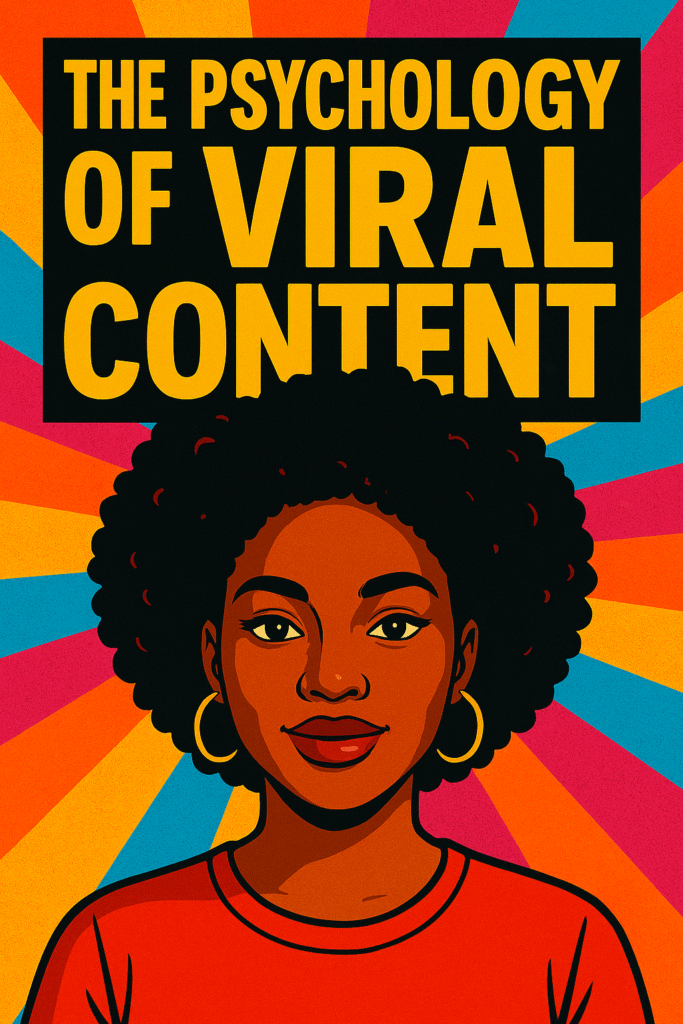When you scroll through social media, some posts stop you cold. They get you laughing, crying, or shocked enough to share. That, in a nutshell, is the magic of viral content. But behind the magic is psychology. While many creators chase trends, only a few understand the science that makes content spread like wildfire.
This article breaks down the psychology of viral content no one is teaching you. If you want to build influence, grow your brand, or simply get your work seen by more eyes, you need to understand these principles.
Why Content Goes Viral
Viral content is not random. Yes, luck plays a role. But behind every viral post is a clear trigger—an emotion or thought that pushes people to hit share. Think of it as digital word-of-mouth. People don’t share for you; they share for themselves. They want to look smart, funny, or in-the-know.
A study by The New York Times revealed that people share content mainly to connect with others, entertain, and support causes they believe in. This is where psychology comes in.
Emotional Triggers That Drive Viral Content
At the heart of viral content lies emotion. Content that sparks no feelings rarely spreads. The top emotions behind viral content include:
- Awe and Inspiration – People love to share motivational stories or mind-blowing facts. Think about TED Talks or powerful success stories in Africa.
- Humor – A funny meme has more sharing power than a polished ad. Laughter is universal.
- Anger or Outrage – Controversial posts stir reactions. But this comes with risk, especially when targeting diverse audiences.
- Surprise – Unexpected twists keep people talking and sharing.
For instance, African Twitter often erupts over surprising cultural stories or funny political memes. The psychology is simple: when emotions run high, shares multiply.
Storytelling: The Secret Weapon
Behind every viral content piece is a good story. People don’t remember facts as much as they remember stories. A post about a startup in Lagos raising funding may not go far on its own. But when told as a story of resilience, with emotional details, it catches fire.
Harvard Business Review explains that stories trigger oxytocin in the brain. This hormone boosts empathy and trust. That’s why we connect with personal narratives more than dry data.
The Role of Identity in Sharing
Another factor in viral content is identity. People share what reflects who they are or what they want others to believe about them. For example, a Nigerian student may share a tech innovation article to show interest in progress. A fashion enthusiast in Nairobi may repost bold African streetwear to reflect style and culture.
Viral content becomes personal. When it aligns with how people see themselves, it spreads faster.
Timing and Trends Matter
Even the best content can flop if posted at the wrong time. Viral content often rides the wave of trends. This doesn’t mean chasing every hashtag, but aligning your message with what’s buzzing.
For instance, Afrobeat stars gain traction when their music videos drop around global events. Creators who jump on trends like YouTube Shorts or TikTok challenges often spark viral growth because they meet audiences where they already are.
You can explore Google Trends to spot rising topics and tie them to your content.
Social Proof: People Follow People
People trust what others already engage with. If a video has thousands of likes, it looks worth watching. This is known as social proof. Viral content often snowballs because of visible engagement.
For African creators, this means encouraging early supporters to interact. Even a small loyal fanbase can spark the first push. Once momentum builds, algorithms amplify the reach.
Crafting Share-Worthy Content
So how do you create viral content? Here are strategies:
- Hook Early: Grab attention in the first 3 seconds. Use bold visuals, captions, or powerful opening lines.
- Keep It Short: Simple content spreads faster. Think TikTok clips or quick Twitter posts.
- Encourage Sharing: Add subtle CTAs like “Tag a friend” or “Share if you agree.”
- Use Visuals: Infographics, memes, and short videos work best.
Infographic: The Psychology of Viral Content
This infographic breaks down the emotional triggers, identity factors, and strategies behind viral content. It’s a quick reference guide for any creator.
The African Context of Viral Content
In Africa, viral content often reflects culture, politics, and humor. Dance challenges, skits, and comedy dominate because they’re easy to relate to. But local issues also play a role. A viral campaign about electricity shortages in Nigeria or climate change in Kenya gains traction because it resonates deeply.
African audiences want authenticity. That means creators who reflect real struggles, humor, and joy often win bigger than those who copy Western trends.
Key Takeaways
- Viral content is not random—it’s psychological.
- Emotion drives sharing more than logic.
- Storytelling and identity amplify reach.
- Timing, trends, and social proof push content further.
- In Africa, authenticity and cultural relevance matter most.
If you’re a creator, brand, or entrepreneur, mastering these lessons can help you go beyond likes and create real influence. Viral content is more than clicks—it’s a tool to shape conversations, inspire change, and build community.
Discover more from Afroclout
Subscribe to get the latest posts sent to your email.


